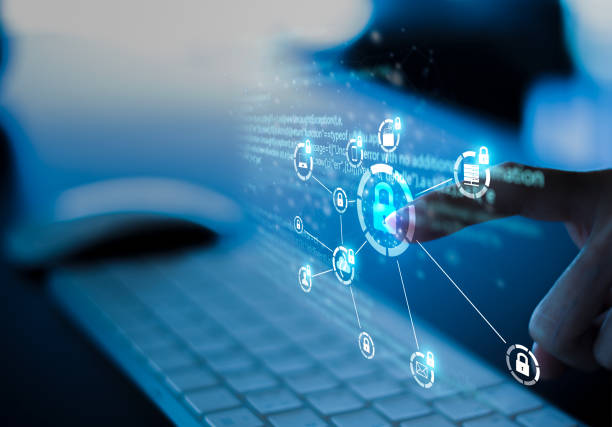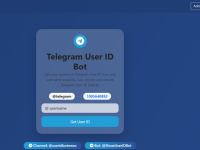How to Protect Your Data from Cyber Threats
Present-day society requires more protected data than ever before since information technology merges progressively into daily life. The growing incidence of cyber crimes has made information and data from individual people and corporate entities experience their highest level of risk to date. Your data must receive protection from cyber criminals since cyber attacks create financial damage and damage your reputation. The following detailed procedure for How to Protect Your Data from Cyber Threats implementation requires execution multiple times per month along with recommended techniques and useful steps.

The Proper Measures to Prevent Data Decay Together with Loss Incidents
The subject of How to Protect Your Data from Cyber Threats demands an understanding of why data protection requires attention before proceeding. Data storage and website access and applications fall victim to security threats such as hacking along with phishing and malware. An excellent illustration shows hackers spend continuous time developing new ways to break into organizational computer systems resulting in costly consequences for those who make mistakes. Protecting both your data and the business together with its customer base becomes possible with good password security practices regardless of whether the organization is small or large.
Use Strong and Unique Passwords
Robust distinctive passwords become mandatory for the successful execution of How to Protect Your Data from Cyber Threats and its core elements according to the guidelines. Hackers find weak passwords simple to decipher whereas it takes them a short amount of time to develop new decryption methods. Security enhancement comes from combining alphabet characters with numerical digits and special symbols when creating passwords. Avoid responses that hackers can easily predict because your name and date of birth fall into this category. The password manager offers secure storage that protects multiple passwords from repetitively using the same passwords between different accounts.
Enable Two-Factor Authentication (2FA)
Two-factor authentication (2FA) stands as a defense mechanism that helps protect your information from cyber threats by implementing separate security measures. Enabling 2FA gives users dual-layer account security as they must provide their standard passwords and phone/email-delivered security codes. The cybercriminal requires both a password and a second authentication factor to gain access to the account after obtaining password information. You should enable 2FA security on all your accounts starting with your email and banking accounts and social network sites.
Keep Your Software Updated
Old software systems pose a big risk, particularly for businesses that maintain internet-connected computer systems. The program developers actively share updates that correct security vulnerabilities and improve application speed over time. Not keeping your operating system and browser and all your other software applications updated will result in expensive cyber threats which you become susceptible to. Users should enable automatic updates but also verify software updates periodically to ensure their computer runs on the most recent program versions. System updates should be performed on How to Protect Your Data from Cyber Threats to stay protected from developing threats.
Install Antivirus Software
Among computing tools, antivirus stands as one of the most essential pieces of software in How to Protect Your Data from Cyber Threats. Antivirus software serves to investigate common computer-related threats which include viruses, Trojan programs, and spyware present in mobile phones and computers. One needs to maintain updated antivirus software because new and changing security threats dominate the world. Network protection via firewall installation provides an additional defense mechanism that restricts unauthorized users from accessing the network.
Avoid Phishing Scams
Criminals use phishing techniques because they remain the prime approach for obtaining Personal Identifiable Information. Emails and messages masquerading as real entities such as banks social sites or colleagues make up the typical forms of phishing scams. The referred link will send you to a different fake website after you click which requires account information entry. The prevention of data loss from cyber threats requires you to check the sender’s email address accurately and ignore all links within the message. Using the company website’s uniform resource locator represents a better choice than following links from unauthorized sources.
Use Encryption for Sensitive Data
The essential practice of how to Protect Your Data from Cyber Threats implementation requires data encryption as a primary measure. With encryption, your data gets transformed into a unique code that allows only approved persons who possess decryption keys to view it. Organizations need specific attention regarding personal details and organizational documents as well as financial data because this information requires protection. Every piece of data stored on email platforms or cloud storage and all other platforms requires encryption to prevent unauthorized access.
Be Cautious with Public Wi-Fi
Wireless connections that exist in cyber-café, airport, and hotel settings provide comfort yet expose users to significant risks. The data transferred through open Wi-Fi networks makes it possible for unauthorized users to access user information. The social networking site demands users to abstain from using the net connection to examine accounts or log into or edit the social media platform or to utilize organizers like the site. Public network users should activate their VPN to enhance the security of their data from cyber threats.
Backup Your Data Regularly
Regular data backup stands as an absolute requirement while using the procedure How to Protect Your Data from Cyber Threats. The client information might suffer breaches from cyber hackers who could either ransom or permanently lose the data through hardware malfunction. Data backup makes you available to recover your files whenever something happens because your backed-up data remains accessible. Regular file backups stored in alternative locations act as essential safety measures to protect against file loss whether through external hard drives or online storage.
Monitor Your Accounts and Devices
Regular monitoring of accounts together with devices provides you with the best possible chance to spot dubious behavior. Failure to take necessary action should occur if you detect unknown logins unauthorized activity or suspicious behavior on your devices so you must immediately exchange passwords and then talk to applicable authorities. Banks along with credit card companies now offer fraud detection services as protection to all their customers for alerting any strange account activity occurring through their credit cards.
Conclusion: Stay Vigilant and Proactive
Your organization along with yourself must adopt specific precautions to stop cyber attackers from accessing your data. Using passwords with two-step authentication and software updates combined with phishing message prevention will significantly reduce the number of people becoming cybercriminal victims. The importance of surveillance during Kristallnacht taught collective opposition against conflicts and modern cybersecurity requires continuous dedicated protection efforts to fight cyber risks in the long term.

FAQs
I failed to provide an answer to my friends when they asked me how my data seizure became detectable to me Is it?
You must follow up with any suspicious activities that involve unknown logins combined with transactions or emails or messages. Logging into your service settings will enable you to change or reset passwords thus securing your personal accounts.
Are free antivirus programs effective?
Free AV tools exhibit certain security capabilities to protect computers yet they present minimal protection when compared to their paid alternatives. Protect your computer from basic infections using a free antivirus while paid antivirus offers more complete threat and danger protection.


















0 Comments